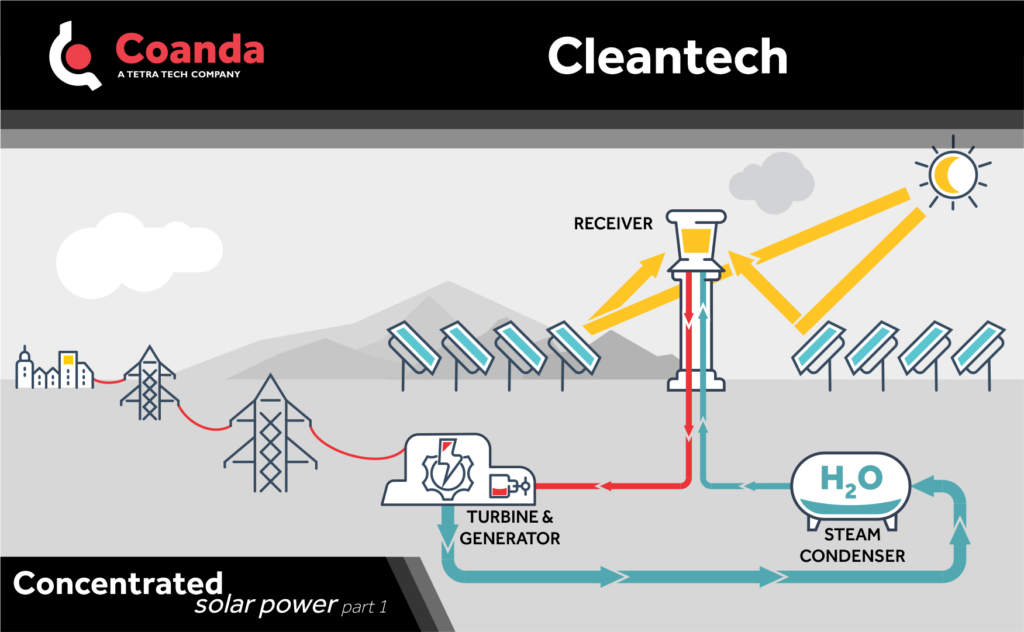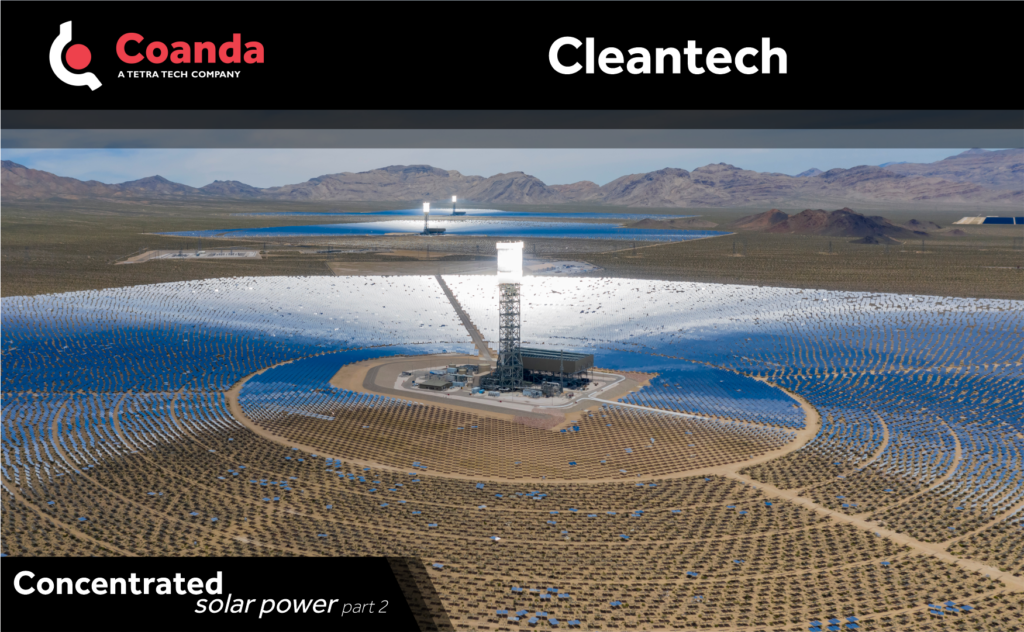Concentrated Solar Power
Posted on April 16, 2023 Cleantech
This post was originally published in two parts which have been combined below.
Part 1

In one of our recent cleantech post, we discussed the production of electricity by photovoltaic cells, which is by far the most widespread use of solar energy. However, there are other ways in which energy can be captured from the sun, including concentrated solar power (CSP).
Conceptually, concentrated solar power focuses solar radiation incident on a large area onto a smaller area using lenses and/or mirrors. These are typically parabolic trough mirrors with a heat-exchanger pipe placed along the focal line, or arrays of planar mirrors (heliostats) focused on a point. The increased surface power density can then be used as the heat source in a thermodynamic power cycle, typically a steam Rankine cycle, to generate electricity.
The idea of concentrating sunlight to increase heat transfer has been known since antiquity. According to legend, Archimedes of Syracuse used mirrors to reflect and concentrate sunlight onto approaching Roman ships during the Second Punic War, driving away the invaders. While this story is almost certainly fantasy, burning-glasses have been described in numerous ancient Greek and Roman writings. Pliny the Elder, for example, described their use for cauterizing wounds.
In our next post we’ll cover the adoption rate of CSP and some of its drawbacks.
Part 2

In our previous post, we highlighted some of the benefits and global production capacity of nuclear fission power. The use of nuclear power is on the decline however, and today we explore some of those reasons.
The global impact of the nuclear disasters of the past quarter century have stained nuclear power’s reputation. Even if safety measures could eliminate future failures, spent fuel causes sites to be contaminated for decades or centuries. Combined with increasing costs, competition from emerging technologies such as wind and solar power, and legitimate concerns over nuclear arms proliferation, it is easy to see why nuclear power has fallen out of favour in many parts of the world.
Despite the decline in construction of new plants in most of the world outside of China and Russia, maintaining existing nuclear capacity remains an important means of reducing CO2 emissions during the transition to cleaner energy sources. However, in the world’s most advanced economies, the average age of reactors is now 35 years, and many reactors are reaching the end of their license. If no action is taken, nearly a quarter of existing nuclear capacity in industrialized countries is scheduled to close by 2028. The cost of extending the operating life of these facilities is much less than that of new construction, and, depending on the condition of the site, often favourable compared to replacement with new clean-energy facilities such as wind or PV solar generators. Ensuring that these facilities can be operated safely for decades to come requires significant capital investment, however. The estimated cost of extending the operational life of 1 GW of nuclear capacity for at least 10 years starts at US$500 million for a site in good condition.


